The Harvard MRSEC provides a vibrant culture of entrepreneurship and several recent Ph.D. students supported by Center IRGs and seed projects have co-founded new companies.

The Harvard MRSEC provides a vibrant culture of entrepreneurship and several recent Ph.D. students supported by Center IRGs and seed projects have co-founded new companies.
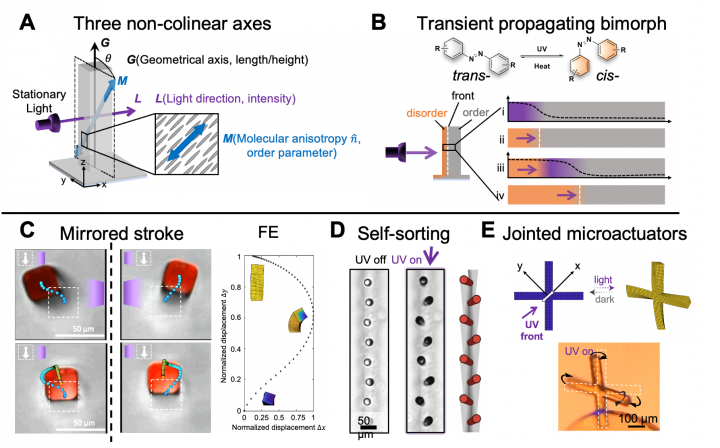
A team at the Harvard MRSEC led by Bertoldi and Aizenberg has developed an approach to achieve a diverse trajectories from a single-material system via self-regulation: when a photoresponsive liquid crystal elastomeric pillar with mesogen alignment is exposed to light, it ‘dances’ dynamically as light initiates a traveling order-to-disorder transition front that twists and bends via opto-chemo-mechanical feedback.
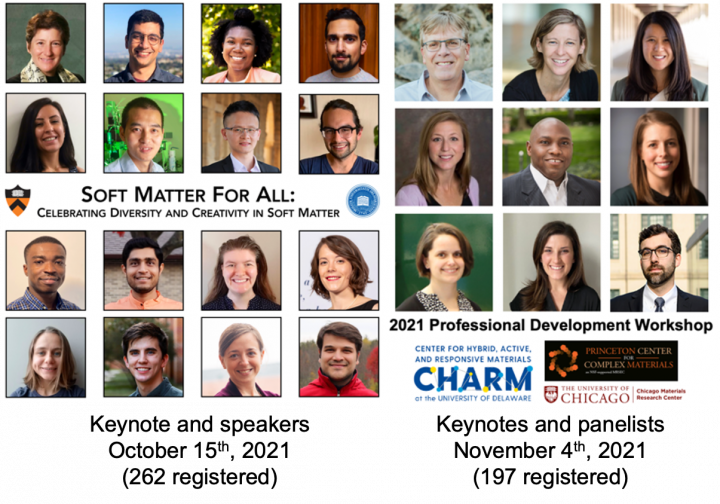
UD CHARM and Princeton’s PCCM coordinated with the Chicago MRSEC to host three virtual events (Soft Matter for All, Rising Stars, and a Professional Development Workshop) to highlight early career, high-impact research and ignite discussion for graduate students and postdocs pursuing academic and non-academic career paths.
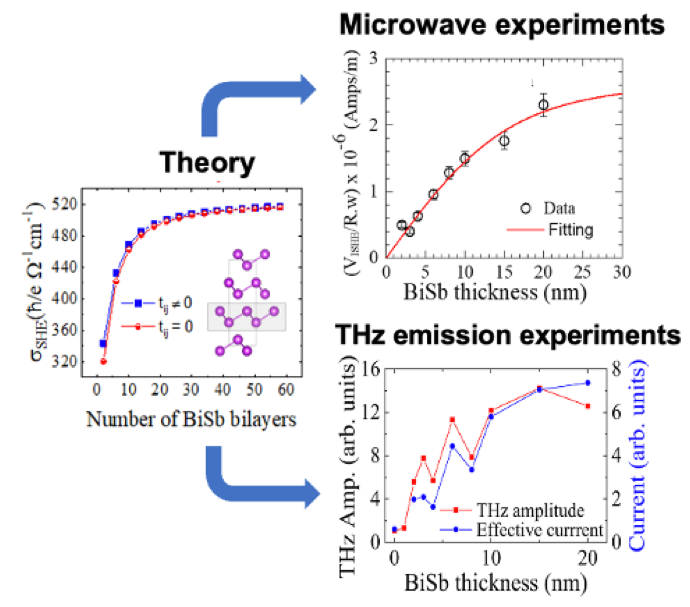
Experimental studies combined with theoretical calculations of spin dynamics across a wide frequency range from ~10 GHz to several THz in a novel amorphous ferromagnet (FM)/3D topological insulator (TI) (FeGaB/BiSb) system that is scalable and provides a promising platform for spin-electronic devices.
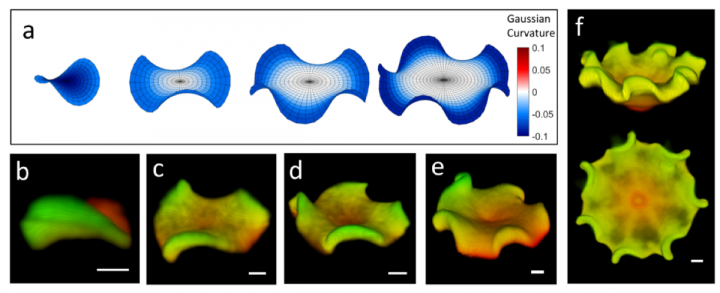
Producing self-assembled structures of prescribed limited size and shape is a major challenge in nanoscience. A major achievement of the MRSEC was to elucidate a new chirality-based mechanism that leads to self-limiting assembly of colloidal rafts.
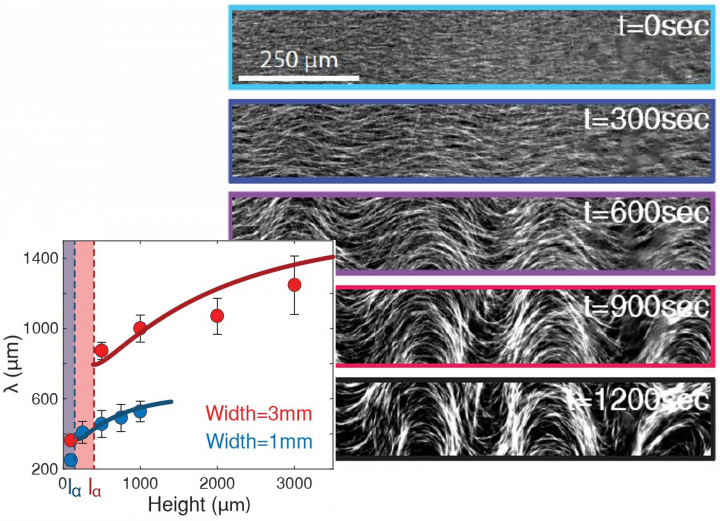
Here, three IRG2 PP developed a combination of experiments with 3D active fluids confined in microfluidic channels and a minimal hydrodynamic model to show that size of the channel determines the emergent lengthscale of the growing deformations. These findings will advance our understanding of active nemato-hydrodynamics and the pathways to 3D active turbulence at low Reynolds number.
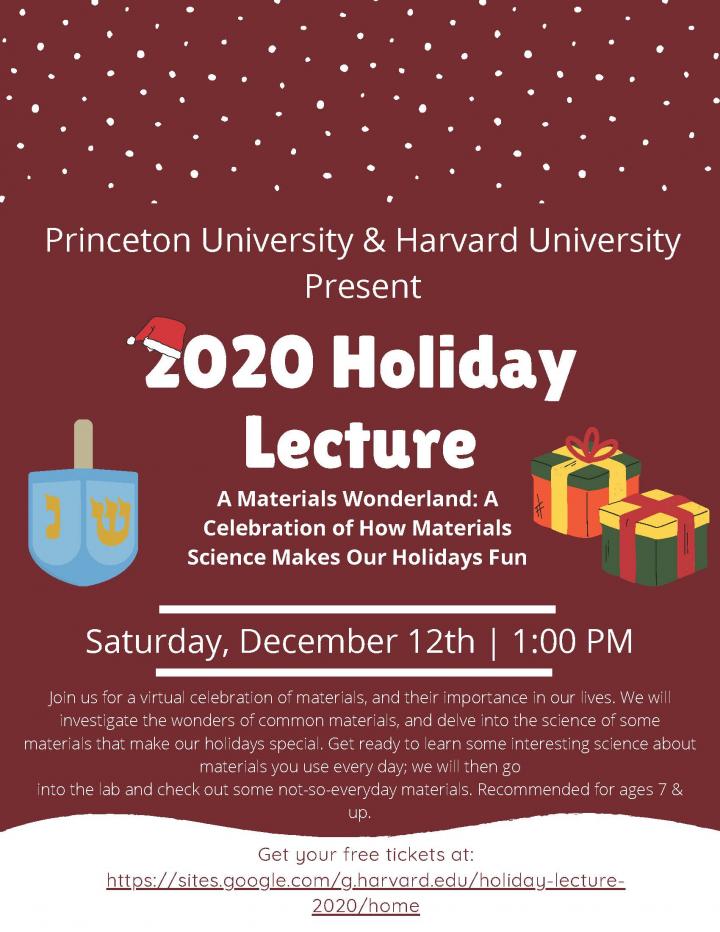
PCCM celebrated its annual Holiday Lecture 2020: A Materials Wonderland: A Celebration of How Materials Science Make Our Holidays Fun with PCCM faculty, research members and others providing (virtual) materials science presentations. The audience helped with experiments and demonstrations from their homes. 426 families registered, some with multiple children (tuning from all over the world), resulting in ~1,000 attendees!
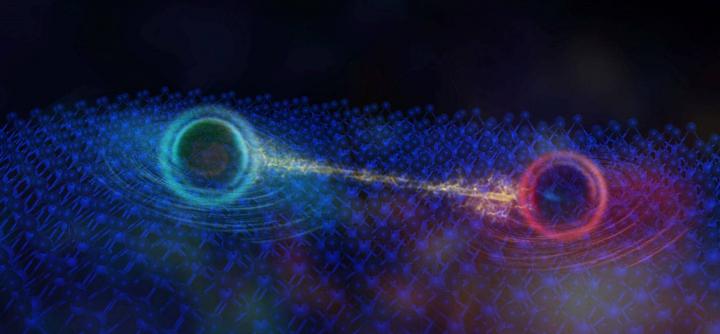
In a surprising discovery, Princeton physicists have observed an unexpected quantum behavior in an insulator made from a material called tungsten ditelluride. This phenomenon, known as quantum oscillation, is typically observed in metals rather than insulators, and its discovery offers new insights into our understanding of the quantum world. The findings also hint at the existence of an entirely new type of quantum particle.
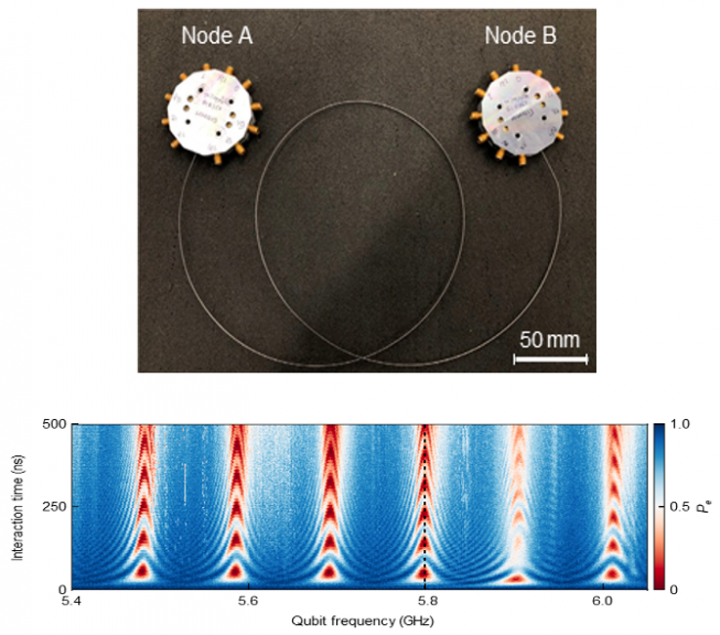
The Cleland and Schuster groups at the University of Chicago have demonstrated multi-bit entanglement in a Quantum Network.
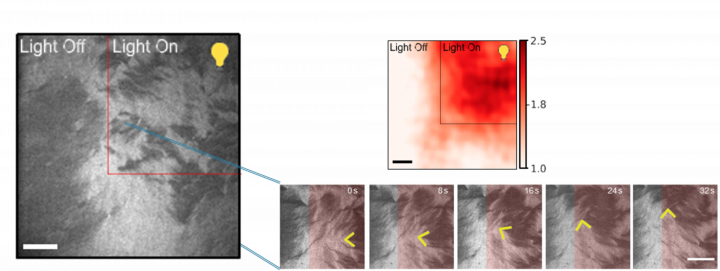
The Gardel lab at the University of Chicago has realized an active liquid crystal where the active stresses could be modulated spatiotemporally through selective illumination with blue light.